Leopard Gecko
Reptilarium Animals
Leopard Gecko
Conservation status (Least Concern)
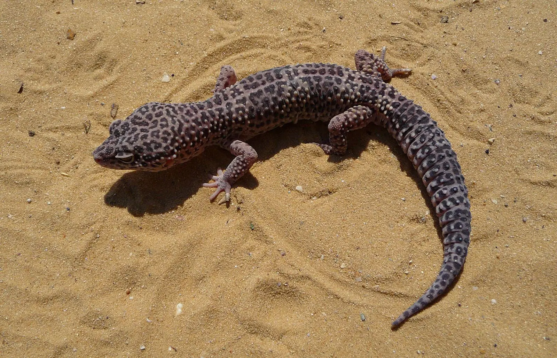

The leopard gecko or common leopard gecko (Eublepharis macularius ) is a ground-dwelling lizard native to the rocky dry grassland and desert regions of Afghanistan, Iran, Pakistan, India, and Nepal. The leopard gecko has become a popular pet, and due to extensive captive breeding it is sometimes referred to as the first domesticated species of lizard.
Common leopard geckos are ground-dwelling lizards. They are larger than many other gecko species. Those found in the wild typically have more dark, dull, and drab coloration's than those kept in captivity as pets. Those in captivity generally have an assortment of skin colours and patterns. The skin of a Common leopard gecko is very durable, which provides protection from the rough sand and rocky hills terrain of their dry environment. Their dorsal side is covered with small bumps, which gives a rough texture and appearance while their ventral side is thin, transparent, and smooth. Like all reptiles, Common leopard geckos shed their skin. Adults shed an average of once a month, while juveniles will sometimes shed twice as much.
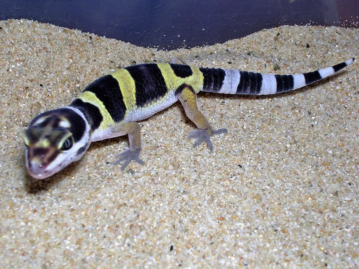
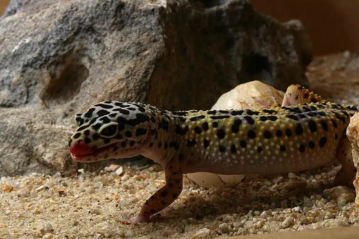
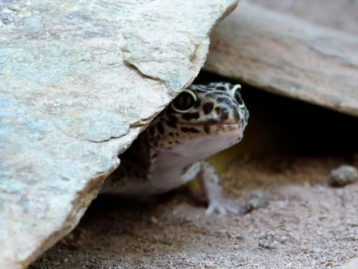
Common leopard geckos are solitary and do not usually live with other animals. They are cathemeral reptiles. In the wild they are mostly limited to burrows and shaded areas during the day, becoming more active at dawn and dusk when the temperature is favourable, and are often active quite sporadically in captivity. Winter temperatures in the native habitat of Common leopard geckos can be quite low, below 10 °C (50 °F), forcing the animals underground into semi-hibernation, called brumation, living on fat reserves. Common leopard geckos have many predators such as snakes, foxes, and other large reptiles. Their keen sense of hearing and sight help them escape from them during the night. Along with their exceptional sight and hearing abilities, their skin helps camouflage themselves from their predators. Their sense of taste and smell also helps them with survival. They also stay in underground holes and burrows during the daytime, not only to avoid the heat but to also avoid the risk of getting eaten. Common leopard geckos are not very vocal but when stressed they will produce barks and squeaks.
Common leopard geckos are insectivores. They feed on crickets, dubia roaches, mealworms/superworms, scorpions, centipedes, spiders, beetles, and other insects.
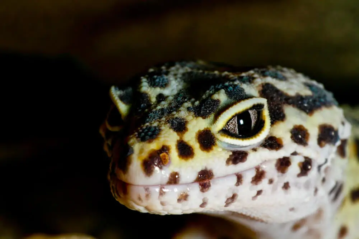
Fun Facts for Kids
- Common leopard geckos are ectothermic. They absorb warmth and energy during the day as they are sleeping, so they can hunt and digest food at night.
- Common leopard geckos have openings on either side of their head as ears which are covered and protected by a tympanic membrane. They use their ears to locate their prey.
- Unlike most geckos, Common leopard geckos have movable eyelids.
- These lizards have short legs, which enable them to be quick and agile while their small nails allow them to climb twigs and rocks.
- Common leopard geckos can detach their tails if they are attacked, grabbed by the tail, bitten during copulation, or nipped by another during feeding. This is called caudal autonomy. After autonomy the tail can continue to twitch for as long as 30 minutes, allowing the gecko to escape from its predator.

